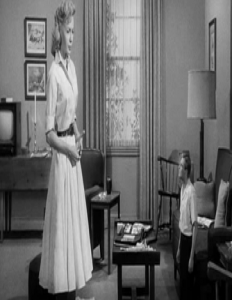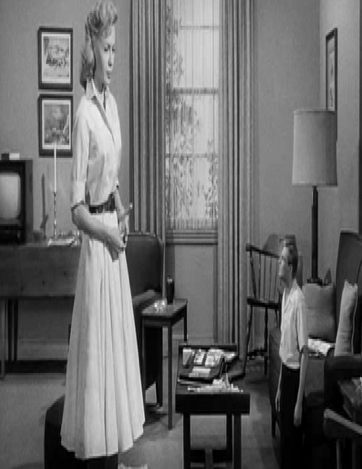De minimis or material? – The survival of the false dichotomy in industrial disease cases – Carder v Secretary of State for Health [2016] EWCA Civ 790
Introduction
 We recently voiced questioned the use of the maxim ‘de minimis’ when proving causation in multi-exposure industrial disease claims (see here)[fusion_builder_container hundred_percent=”yes” overflow=”visible”][fusion_builder_row][fusion_builder_column type=”1_1″ background_position=”left top” background_color=”” border_size=”” border_color=”” border_style=”solid” spacing=”yes” background_image=”” background_repeat=”no-repeat” padding=”” margin_top=”0px” margin_bottom=”0px” class=”” id=”” animation_type=”” animation_speed=”0.3″ animation_direction=”left” hide_on_mobile=”no” center_content=”no” min_height=”none”][1]. It was suggested that in these types of claims the function of the maxim has been subverted.
We recently voiced questioned the use of the maxim ‘de minimis’ when proving causation in multi-exposure industrial disease claims (see here)[fusion_builder_container hundred_percent=”yes” overflow=”visible”][fusion_builder_row][fusion_builder_column type=”1_1″ background_position=”left top” background_color=”” border_size=”” border_color=”” border_style=”solid” spacing=”yes” background_image=”” background_repeat=”no-repeat” padding=”” margin_top=”0px” margin_bottom=”0px” class=”” id=”” animation_type=”” animation_speed=”0.3″ animation_direction=”left” hide_on_mobile=”no” center_content=”no” min_height=”none”][1]. It was suggested that in these types of claims the function of the maxim has been subverted.
Historically, de minimis was used as a blunt tool to exclude trifling matters from litigation. However, recent cases in the industrial disease arena have given it a broader role. This has been done by equating the finding that a defendant’s contributory factor is not de minimis, to meaning that factor is ‘material’ and so causative; that is to say to find that it “materially contributed” to a claimant’s damage. Materiali contribution has therefore been treated as the converse of de minimis, with no space for manoeuvre between the two.
In creating this false dichotomy, the term ‘de minimis’, which is by its very nature an impressionistic idea, undercuts the objective and scientific inquiry that should accompany any investigation into whether something is material or not. Further, it undermines the test of ‘materiality’ as set out by the House of Lords in Rothwell.[2] That is, whether or not the contributing factor makes the claimant “worse off”. The fact a contributing factor is not deemed to be ‘de minimis’, does not necessitate the conclusion that the contributing factor made the Claimant worse off.
By determining causation in relation to whether something is de minimis or it is not, the legal approach displays insufficiently clear reasoning and a lack of scientifically rigorous analysis in an area of law deeply rooted in medical and epidemiological research.
Carder in the High Court
The essential issue was illustrated in the first instance decision in Carder v Secretary of State for Health [2015] EWHC 2399 (QB). The relevant facts are that the Claimant developed asbestosis, and the Defendant contributed only 2.3% of the Claimant’s asbestos exposure.
The Claimant’s expert, Dr Rudd, suggested a figure of a 1% contribution to total asbestos exposure as the threshold below which any exposure could be viewed as de minimis in light of the overall exposure. He indicated that this was from a “common sense” point of view. This evidence supports the view that de minimis is an impressionistic term. The court then applied the false dichotomy to conclude that because the Defendant’s contribution was not de minimis, it was positively ‘material’ and so causative of the Claimant’s injury. To put it another way, causation was proven on the basis of an expert’s “common sense” view.
This was despite Dr Rudd’s assertion that the Claimant’s actual function and symptomology would not have been “measurably or demonstrably different’ if the Defendant’s contribution had not taken place. It is hard to reconcile the court’s approach with the test of materiality in Rothwell. It is not clear how on Dr Rudd’s evidence the Claimant in Carder had been made worse off.
It was on this basis that the case was brought before the Court of Appeal, providing a valuable opportunity to put to bed the false dichotomy of ‘de minimis or material’ and to provide further guidance on how to approach the concept of ‘materiality’. Unfortunately the court did neither.
Carder in the Court of Appeal
Lord Dyson MR delivered the decision of the court. Unfortunately ,the judgement accepts and reinforces the impressionistic use of de minimise as a test of causation .
Dr Rudd was asked four questions by counsel for the Defendant, in an effort to argue that the Claimant had not been made “worse off”, meaning the Defendant’s contribution was not material.
In answering, Dr Rudd explained that if the Defendant’s exposure had not taken place, the appearance of the Claimant’s lungs and his response to lung function testing would be no different. Nor would the subjective perception of the Claimant’s symptomology change and finally, the Claimant’s ability to cope with daily tasks would have been the same.
The Defendant’s case was therefore that the 2.3% exposure made no difference to the Claimant’s symptoms, disability or prognosis, and it followed that there was no actionable damage. Or to put it another way, the Claimant had not been made materially worse off by the Defendant’s exposure. It was not enough to merely contribute to the disease process, where that contribution made no other measureable difference to the Claimant.
This argument applies the test of materiality in Rothwell to a contribution to injury as to sole causation .
However, the decision was reached pursuant to a less principled line of reasoning. The Court of Appeal quoted Lord Reid in Bonnington[3]:
“a contribution which comes within the exception de minimis…is not material, but I think that any contribution which does not fall within that exception must be material.”
This passage explicitly sets out the false dichotomy. This, combined with what appears to be a paradoxical concession by the Defendant, was decisive of the case. At paragraph 28 the court stated “Mr Kent [the Defendant] conceded that the…exposure, although very small, was material”.
It is not clear on what basis this concession was made given Defendants central argument.
it could have been conceded that the exposure was not de minimise in the traditional impressionistic sense ; but such a
concession should have been irrelevant. Whether or not the contribution was de minimis in this sense should not in and of itself be decisive of whether a Claimant was worse off as a result of that contribution. That conclusion should be reached pursuant to the medical evidence which was unequivocal on this point .
However, as a direct result of the false dichotomy, the concession was decisive. Lord Dyson stated at paragraph 39 that “there is a fundamental contradiction in the appellant’s [defendant’s] case”, because on the one hand the Defendant argued the contribution has made no difference to the Claimant’s symptoms, disability or prognosis, but on the other hand conceded that the 2.3% was material.
Lord Dyson continued at paragraph 40:
“it is conceded that the increase was material i.e. not de minimis’. In my view, this concession is critical. In these circumstances, the judge was right to hold that Mr Carder was slightly worse off…this conclusion naturally followed from the appellant’s acceptance of the fact it was responsible for the 2.3% and that this was material.”
This is the starkest example yet of how the false dichotomy between materiality and de minimis is clouding proper legal and scientific analysis. The court did not consider in normative terms how Claimant could be “worse off” despite there being no measureable difference resulting from the Defendant’s contribution. Instead, the court relied almost entirely on the Defendant’s concession that the contribution was not de minimis (or as Mr Kent put it, that it was material) to conclude that the contribution was material and causative. This borders on circularity.
Conclusion
The Court of Appeal decision in Carder confirms that the time has come to dispose entirely of the use of the term ‘de minimis’ when proving causation in multiple exposure industrial disease claims.
A concession that something is not de minimis should not have necessitated the conclusion that the Claimant had been made worse off by the Defendant’s contribution. At most, it should have been taken as an acknowledgement that the contribution was not so trifling as to be ignored. This should not have impacted on a normative analysis of why the Claimant had or had not been made ‘worse off’, which is the test for materiality.
Even if there is some utility in using the term de minimis in order to emphasise a particular contribution is worthy of the court’s consideration, the confusion it is adding to the test of causation, the decisiveness afforded to the false dichotomy and the obfuscation of sound reasoning resulting from this means that it is best to dispense with the maxim altogether.
[1] ‘Is it time to disregard de minimis?’ Charles Feeny and Sammy Nanneh
[2] Rothwell v Chemical and Insulating Company Limited and others [2007] UKHL 39
[3] Bonnington Castings v Wardlaw [1956] AC 613
This article was co-authored by Charles Feeny and Sammy Nanneh[/fusion_builder_column][/fusion_builder_row][/fusion_builder_container]


 In cases where an employee is exposed to asbestos, a claim may be brought under the common law as well as pursuant to duties owed by the employer under various regulations and legislation. One example of such legislation is s.63 (1) Factories Act 1961, which provides that:
In cases where an employee is exposed to asbestos, a claim may be brought under the common law as well as pursuant to duties owed by the employer under various regulations and legislation. One example of such legislation is s.63 (1) Factories Act 1961, which provides that: